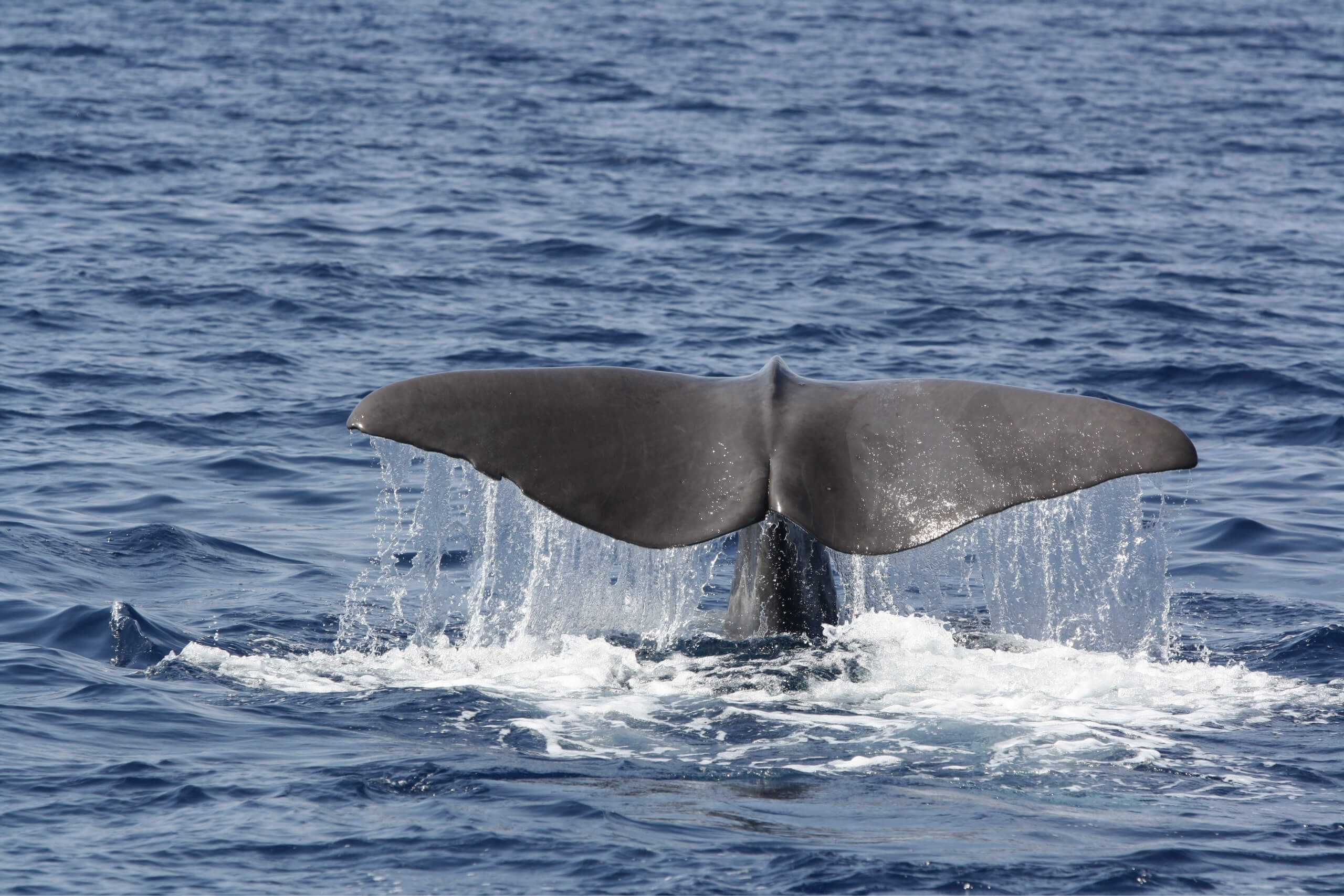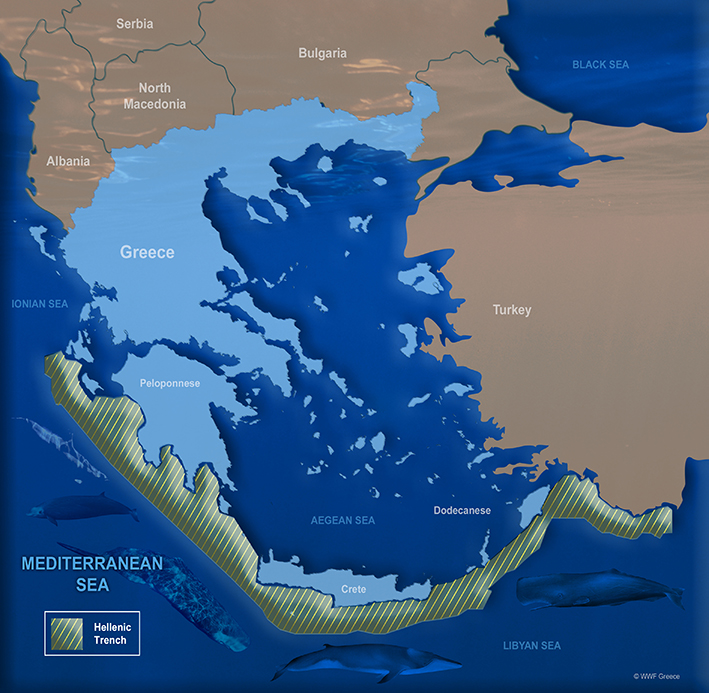STRENGTHENING CETACEAN RESEARCH AND CONSERVATION IN THE HELLENIC TRENCH WITH THE BLUE PANDA VESSEL


Species
Cetaceans
Organization
TETHYS RESEARCH INSTITUTE, WWF GREECE
Duration
March 2024 - February 2026
Region
Hellenic Trench, Ionian Sea, Greece
THE NEED
Cetaceans play an important ecological role in aquatic ecosystems, by providing valuable ecosystem services, as regulators of the marine environment’s health.
The Hellenic Trench, an area extending from northern Kefalonia to the Dodecanese, including Peloponnese’s northern part in the Ionian Sea, in Greece, is critical habitat for the endangered Mediterranean sperm whale (Physeter macrocephalus) subpopulation, where the density of animals is the highest across the entire basin. The area is also the largest among the five high-density areas in the Mediterranean Sea for the vulnerable Cuvier’s beaked whale (Ziphius cavirostris). The northernmost portion of the Hellenic Trench is also the only area where individuals of the endangered fin whale (Balaenoptera physalus) have been observed in Greek waters.
All three iconic cetacean species, as well as other cetaceans, of smaller sizes, encountered in the area, are under ever-increasing pressure from human activities in the area, including shipping- and therefore ship-strikes- and are protected under national, European and international legislation. The wider Hellenic Trench has been recognized as a Cetacean Critical Habitat (CCH) and, as such, it has been proposed as a Marine Protected Area (MPA) by the Agreement on the Conservation of Cetaceans of the Black Sea, Mediterranean Sea and contiguous Atlantic area (ACCOBAMS). Furthermore, the area has also been designated in 2016 as an Important Marine Mammal Area (IMMA) by the International Union for Conservation of Nature (IUCN) Species Survival Commission/ World Commission on Protected Areas (SSC/WCPA), Marine Mammal Protected Areas Task Force (MMPATF).
THE PROGRAM
Knowledge on species occurrence, abundance, distribution and movements in the area is limited. Therefore, it is essential to gather robust information to address knowledge gaps, especially in light of the high volume of human pressure that could harm cetaceans’ populations in the area.
To move in this direction, the program’s specific objectives concern:
- Gaining further knowledge on understudied cetacean species inhabiting the Hellenic Trench, focusing on the area extending between northern Kefalonia and southwestern Crete. Tethys Research Institute (Italy) and WWF Greece will use the WWF Blue Panda sailing boat, with the support of WWF Whales and Dolphins, in coordination and in collaboration with the scientific partners of the LIFE MareNatura program. Research activities include visual and acoustic surveys, aiming to detect, track and locate sperm whales and other echolocating cetaceans in real time. The collection of photographs suitable for photoidentification will be used to create a catalogue of individual whales and dolphins encountered during the survey, to be compared with existing initiatives across Greek waters and adjacent areas. Drone photogrammetry will be used to measure the length of individual animals and assess the health status of large whales. Sea water samples will be collected for genetic analyses (environmental DNA), a method that enables the collection of information regarding the structure of the cetacean species’ populations, as well as information about their prey. Finally, to gather baseline information on small- to medium-scale animal movements, associated behavioral states and habitat use, satellite transmitters (LIMPET tags) may be deployed on healthy sperm whales, according to special protocols implemented internationally.
- Raising awareness on cetaceans and the threats jeopardizing their persistence in the area, as well as on the ecological value of the Hellenic Trench, through the dissemination of communication material, aiming at the local, national and international public.
- Advocating for the establishment and adoption of area-based management measures to protect cetaceans in the Hellenic Trench, aiming to shift the state of political support nationally and internationally for cetacean conservation in the eastern Mediterranean.
